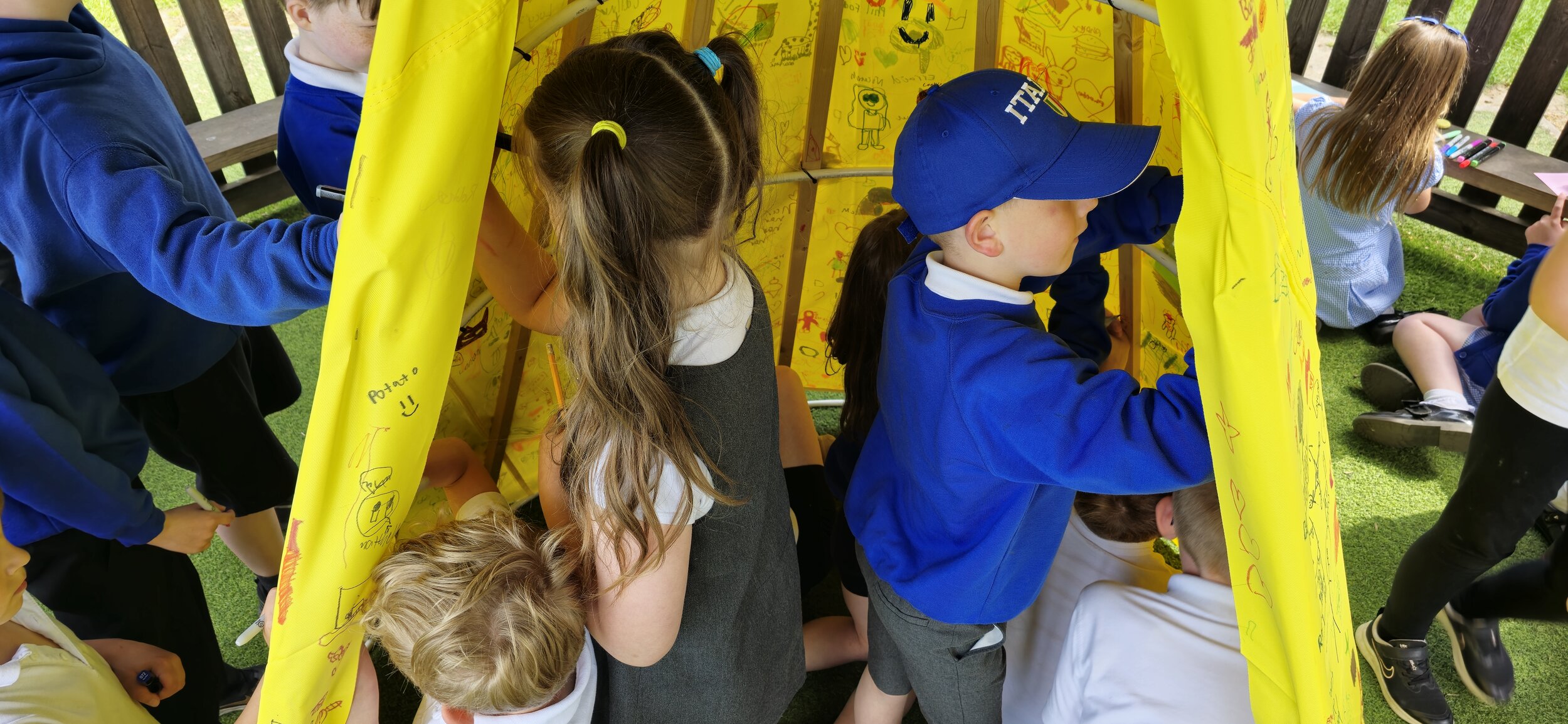Creating Safe Spaces in Clackmannanshire: The Heart of the Memorial
The Covid pandemic left many people feeling isolated, fearful, and disconnected. In response, our Remembering Together project placed a central focus on creating safe, welcoming spaces where community members could come together to reflect, share their experiences, and find a sense of belonging. These safe spaces, both physical and emotional, played a vital role in the healing process for individuals and the wider community.
Image from school workshop
The Importance of Safe Spaces
The concept of a safe space goes beyond physical location; it is an environment where people feel emotionally secure and free from judgment. Throughout the project, spaces were designed to encourage openness, reflection, and connection. Whether through art workshops, poetry readings, or simply sitting together in a quiet corner, these spaces encouraged participants to process their emotions in a supportive setting. One participant shared, "Coming here gave me the time to think, to feel safe enough to cry and talk about what I had been holding in for so long."
Creating Safe Spaces through Art
Art, in its many forms, became a key tool for fostering safe spaces. The project invited individuals to participate in various creative activities, including drawing, painting, and sculpture, which enabled them to express their feelings in non-verbal ways. The creation of safe spaces through art was particularly effective because it encouraged participants to explore complex emotions without needing to find the 'right' words. The physical act of making something with their hands gave many people a sense of control during a time when so much felt uncertain.
Impact of the Physical Environment on Wellbeing
The environments in which these safe spaces were created were equally important. Outdoor settings like community gardens or nature walks supported participants to connect with the natural world, which is known to have positive effects on mental health. Studies show that spending time in nature can reduce feelings of stress and anxiety, promote mindfulness, and foster emotional resilience. A report from the University of Derby found that nature-connectedness significantly increases feelings of wellbeing: "Being in a natural environment allows for a restorative experience, where the mind can relax and focus on the present moment." One participant in the project echoed this sentiment: "Walking through the park during the session made me feel grounded—it felt like the trees were helping me breathe."
In the case of the Remembering Together project, the physical spaces were deliberately chosen for their soothing, open atmospheres. The teepees constructed by local communities provided a sense of shelter, intimacy, and connection, while the natural environment around them encouraged reflection and healing. These spaces became sanctuaries for those still grappling with the impact of the pandemic, helping individuals rebuild trust in themselves and others.
The Psychological Impact of Safe Spaces
Safe spaces offer more than just emotional security—they have a tangible impact on psychological wellbeing. Research shows that creating an environment where individuals feel accepted and supported can reduce stress and anxiety, improve social bonds, and enhance overall emotional health. Safe spaces encourage vulnerability, which leads to deeper connections and a sense of communal healing. As psychologist Dr. Brené Brown states, “Vulnerability is the birthplace of love, belonging, joy, courage, empathy, and creativity. It is the source of hope, empathy, accountability, and authenticity."
For many participants, these safe spaces were transformative. "I hadn’t realized how much I needed to just sit and talk with others," one community member reflected. "The safe space wasn’t just about being somewhere physically—it was a feeling of being heard, of being accepted."
Conclusion
Through the Remembering Together project, Clackmannanshire created not just physical but emotional safe spaces where healing could flourish. These environments offered people the chance to explore their feelings in a non-judgmental setting, fostering resilience, connection, and hope. As the community moves forward, the legacy of these safe spaces will remain, reminding us of the importance of creating environments where everyone can feel seen, heard, and supported.
Quotes from participants:
"Art helped me express what I couldn’t put into words."
"Being outdoors, in nature, gave me a sense of peace I hadn’t felt in a long time."
"The safe space wasn’t just a physical place—it was a sense of belonging."
These safe spaces, built on mutual trust, reflection, and shared experiences, played a crucial role in Clackmannanshire's journey toward healing and resilience.

